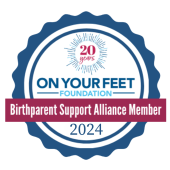Choosing Between International and Domestic Adoption

Understanding the options available is one of the most important first steps in growing a family through adoption. Two of the most common paths are Domestic Infant Adoption and International Adoption, each with unique processes, legal requirements, timelines, and emotional considerations. Choosing one over the other often comes down to personal preferences, comfort levels, and what’s best for the child.
This guide will break down the essential differences between these two options. We’ll look at the logistics, emotional impact, financial costs, and support systems involved. For families considering adoption, or birth parents researching possible options, this information can provide a grounded starting point for informed decisions.
What is Domestic Infant Adoption?
Domestic Infant Adoption refers to the adoption of a newborn or infant within the United States. This type of adoption most often occurs through a licensed private agency, sometimes an adoption attorney, and usually involves a voluntary placement by a birth parent or birth parents.
In most cases, the adoptive family is matched with a birth mother during her pregnancy. This gives both parties the opportunity to communicate before the baby is born and, in many cases, agree on a post-placement relationship (open, semi-open, or closed adoption).
Key Features:
- The child is typically a newborn or only a few weeks old.
- Matching and placement often occur before or shortly after birth.
- Opportunities for ongoing contact with birth families may be available.
- U.S. laws apply, and processes vary by state
The opportunity to parent from birth, combined with the potential for open adoption, makes Domestic Infant Adoption appealing for many hopeful parents.
What is International Adoption?
International Adoption involves adopting a child from another country. These adoptions are governed by both the child’s birth country and U.S. immigration and adoption laws. Unlike domestic adoptions, international placements usually involve children who are up to several years old.
Parents pursuing this option often work with adoption agencies that are accredited for international placement. The process involves more paperwork and typically takes longer, but for some families, international adoption offers the opportunity to care for a child in need who might otherwise remain in institutional care.
Key Features:
- Children are usually toddler age or older and may have special needs.
- Legal and immigration steps involve multiple government systems.
- Less likely to involve post-adoption contact with birth families.
- Travel to the child’s country is typically required.
While International Adoption brings meaningful opportunities, it also requires preparation for cultural, language, and legal differences. Families considering this path often seek to build a multicultural household and support their child’s heritage.
The Role of Wait Times and Predictability
A major consideration in choosing between Domestic Infant Adoption and International Adoption is the waiting period. Many adoptive parents hope for a timely process, but timelines can vary significantly.
Domestic Infant Adoption Timelines
Wait times for Domestic Infant Adoption is typically one to three years, and can depend on several factors:
- The adoptive family’s preferences (openness to race, gender, medical history, etc.)
- The number of expectant mothers looking to place and families hoping to adopt
- The expectant parent’s preferences (adoptive family of a certain race, location, make-up, etc.)
Agencies will often tell families that being flexible and open in their preferences can shorten wait times. But it’s also important to emotionally prepare for unknowns, birth parents may change their minds, and matches can fall through.
International Adoption Timelines
International timelines tend to be more structured, but longer. Depending on the country, the process can take several years. Some countries also implement waiting periods between being matched and finalizing the adoption.
The political stability of the child’s country, immigration policies, and shifting adoption laws can also cause unexpected delays or interruptions. While less common, some programs are suspended entirely mid-process due to international changes.
So while international paths can seem more predictable on paper, external variables may make the wait longer than expected.
Legal Process and Requirements
Laws can shape the experience of adoption just as much as the emotional aspects. Understanding the legal requirements of both Domestic Infant Adoption and International Adoption is essential.
Process for Domestic Infant Adoption
In the United States, adoptions must comply with state-specific laws and regulations. These include:
- Home study approval
- Parental rights termination (voluntary for birth parents)
- Interstate Compact on the Placement of Children (ICPC) when crossing state lines
- Post-placement supervision before finalization
Every state has different requirements about birth parent consent timing, revocation periods, and openness arrangements. A licensed adoption professional or attorney guides families through these steps and ensures clarity.
Process for International Adoption
International adoption is more complex. It includes:
- Approval through the U.S. Citizenship and Immigration Services (USCIS)
- Hague Accreditation (for countries under the Hague Adoption Convention)
- Home study according to Hague standards
- Visa applications and embassy interviews
- Adherence to the child’s country laws
Families often need to make one or more trips abroad, attend court hearings, and complete extensive documentation to prove eligibility and secure the child’s U.S. entry.
The added steps in International Adoption don’t mean the process is less valid, it simply involves dual compliance with international and U.S. regulations.
Emotional Support and Bonding Considerations
Adoption isn’t only a legal process, it’s deeply emotional for everyone involved. Bonding and attachment are key pieces in building a healthy, lasting connection between parents and child. For both Domestic Infant Adoption and International Adoption, the ability to support a child emotionally will shape the family experience long-term.
Bonding in Domestic Infant Adoption
With Domestic Infant Adoption, adoptive parents often bring home their child within days of birth. This early placement can help facilitate natural bonding. Holding, feeding, and caring for a newborn from the beginning creates physical closeness and trust.
Many domestic adoptions are open, meaning the birth family may stay in the child’s life to some degree. For some families, this adds an additional layer of emotional support. The child grows up with answers to questions about their origin, which can help with identity and self-worth later in life.
However, openness may also bring emotional complexity. Adoptive parents often need guidance in navigating communication with birth parents, respecting boundaries, and prioritizing the child’s needs above all.
Bonding in International Adoption
International Adoption may involve children who have lived in institutional settings, foster care, or orphanages for extended periods. While adoptive parents are committed and loving, it may take time for a child to trust, attach, and feel safe.
Language barriers, unfamiliar foods, and different caretaking styles can all add layers of adjustment. That said, many parents report that the effort invested in building attachment pays off richly over time.
Support from adoption-informed counselors, attachment parenting education, and trauma-sensitive caregiving practices can make a significant difference. Families who prepare for a gradual bonding process often find their relationship deepens in unexpected and beautiful ways.
Making the Right Choice for Your Family
Choosing between Domestic Infant Adoption and International Adoption comes down to personal values, capacity for flexibility, and long-term goals for your family. There’s no one-size-fits-all approach, but asking the right questions can help make the decision clearer.
- How important is age at placement?
If you’re hoping to parent a newborn from day one, Domestic Infant Adoption may offer that opportunity. International Adoption may not provide the opportunity to adopt an infant. - Are you comfortable with international travel and immigration processes?
International adoption often requires travel, sometimes multiple trips. This can be exciting or intimidating depending on your comfort level, budget, and ability to take time off work. - How do you feel about open adoption?
If ongoing contact with the birth family feels like a healthy, positive part of your parenting journey, Domestic Infant Adoption might be more suitable. Most international adoptions are closed due to lack of access to birth parent contact. - Are you prepared for potential cultural or racial differences?
If adopting across cultures or races, are you ready to educate yourself, honor your child’s identity, and build an inclusive environment around them? - What type of support network do you have?
Raising an adopted child requires patience, resilience, and emotional backup. Consider what resources (local or virtual) are accessible to your family for support.
These are just a few guiding questions. Each family has a different set of priorities, and being honest about your capabilities helps ensure a loving and stable environment for the child.
Differences at a Glance
| Feature | Domestic Infant Adoption | International Adoption |
|---|---|---|
| Child’s Age | Newborn | Typically toddler to older child |
| Travel Required | Interstate at most | Often 1–2 trips internationally |
| Legal Systems Involved | U.S. state laws | U.S. and foreign government laws |
| Open Adoption Possibility | Often possible | Rare |
| Cost Range | $25,000–$50,000 | $30,000–$60,000+ |
| Timeline | 1–3 years on average | Several years |
| Cultural Differences | Sometimes | Frequently |
| Birth Parent Contact | Possible, if open/semi-open | Unlikely |
Here’s a quick side-by-side to help visualize the comparison between Domestic Infant Adoption and International Adoption:Final Thoughts: Domestic Infant Adoption vs International Adoption
Every adoption path comes with real-life impact, for children, for families, and for birth parents. Choosing between Domestic Infant Adoption and International Adoption isn’t about right or wrong. It’s about listening to your heart, being informed, and building a stable, nurturing environment for the child who will one day call you “family.” The best choice is the one grounded in love, openness, and long-term commitment.
If you’re considering Domestic Infant Adoption or International Adoption, you don’t have to figure it all out alone. The team at Adoption Center for Family Building is here to answer your questions, explain the steps, and help you move forward with confidence.
Visit our website at Adoption Center for Family Building or reach out through our contact form to get started today.





